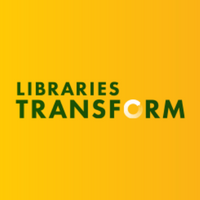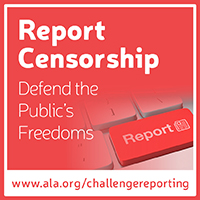Winners of the 2021 VLA Graphic Novel Diversity Award Announced
The Graphic Novel Diversity Award (GNDA) celebrates diversity captured within the pages of graphic novels. In 2021, our seventh year offering the award, 50 publishers submitted 108 titles in two categories: Adult and Youth. The Committee is proud to announce the winners and honor books selected for the 2021 Award.
Winner: Adult
Djeliya by Juni Ba; art by Juni Ba. Published by TKO Studios.
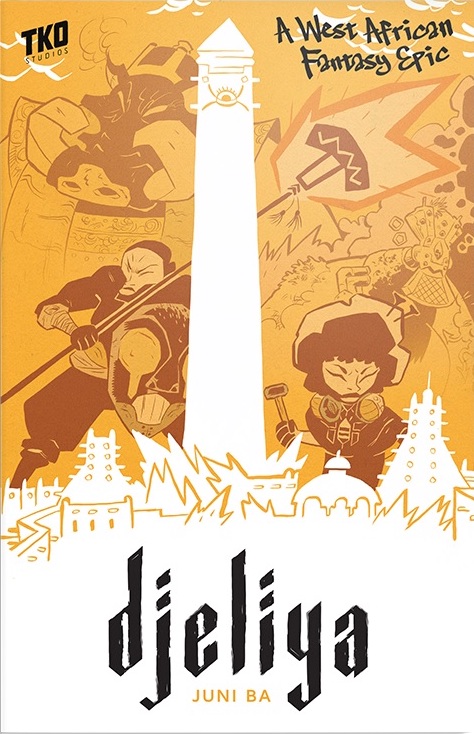
Themes: Color/Race/Ethnicity/Nationality
A dramatic blend of West African folklore and post-apocalyptic futurism, Djeliya turns the "chosen one" narrative on its head. Following the destruction of the world by a mysterious wizard, an eclectic cast of characters vie for control of his fortress-tower and the rumored powers within. The story follows the prince Mansour and his royal storyteller, Awa, on a journey of redemption and struggle. Djeliya deftly incorporates West African culture and traditional elements that will draw readers into a new world filled with mystery and intrigue.

Juni Ba (Author and Artist)
Honor Books: Adult
Cyclopedia Exotica by Aminder Dhaliwal; art by Aminder Dhaliwal. Published by Drawn & Quarterly.
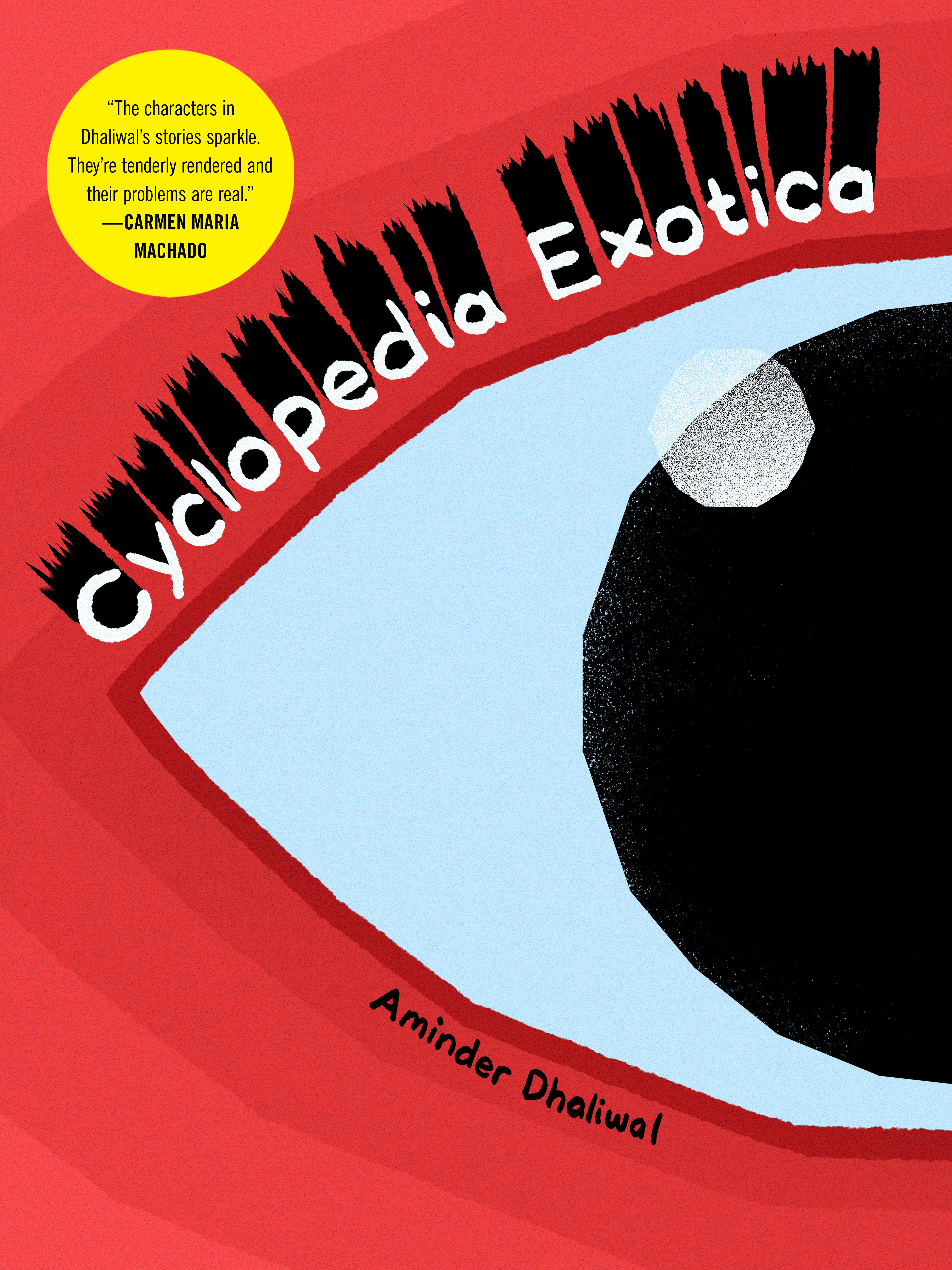 Theme: Sexuality, Color/Race/Ethnicity/Nationality, Disability Theme: Sexuality, Color/Race/Ethnicity/Nationality, Disability
Cyclopedia Exotica is an allegorical reflection on racial oppression through the lens of a fictitious minority. The cyclops are largely immigrant and display different physical characteristics than people with two eyes. A thought-provoking look into a world of microaggressions, outright hostility, and sexual fetishization explores issues in our own world by removing the closeness to racial discrimination in our everyday lives.
Parenthesis by Élodie Durand; art by Élodie Durand. Published by IDW Publishing.
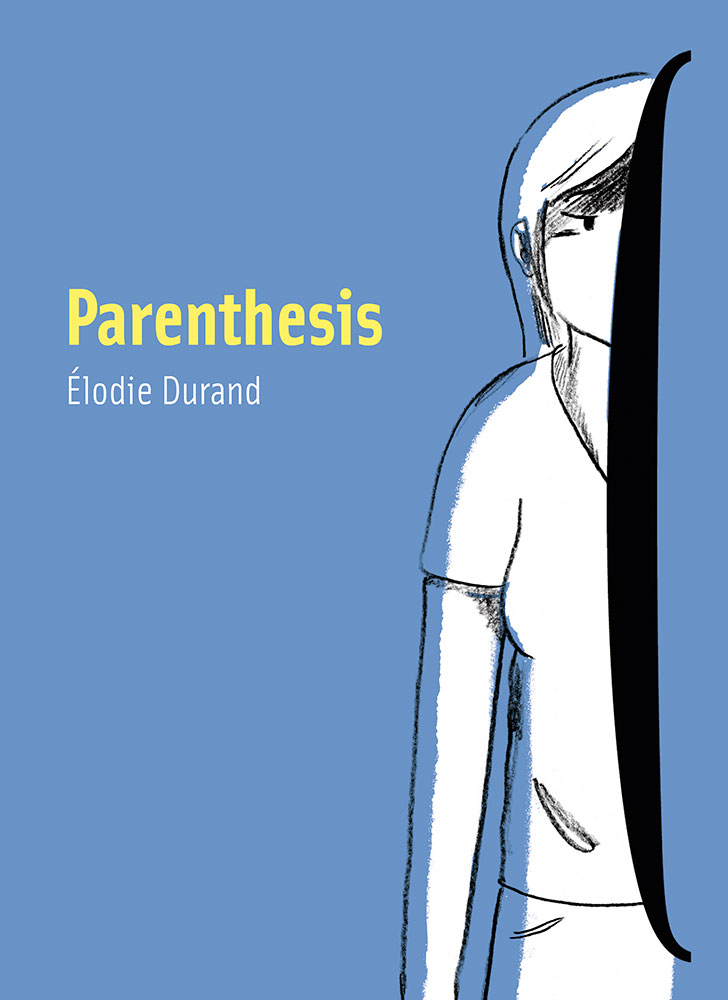
Theme: Disability
Inspired by the author’s own experiences, Parenthesis tells the story of Judith, whose life is turned upside down by the discovery of a tumor pressing on her brain. As a result she must navigate an unfamiliar world as memory gaps and seizures distort and destroy her sense of self. Though this title focuses on the experiences of someone who has a tumor, it is told in an accessible way that will resonate with a variety of readers.
Stone Fruit by Lee Lai; art by Lee Lai. Published by Fantagraphics.
Themes: LGBTQIA+, Color/Race/Ethnicity/Nationality, Mental Health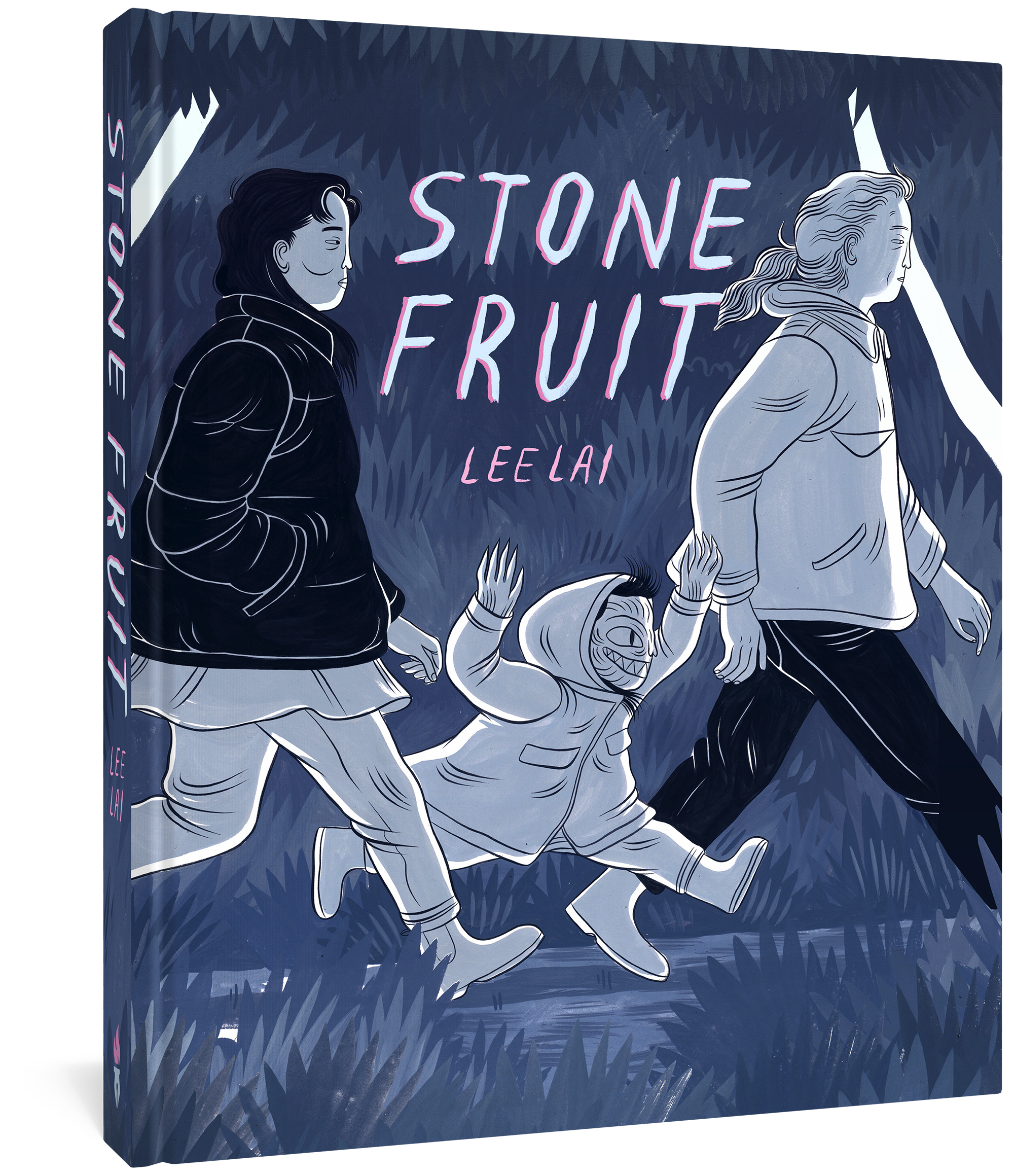
Stone Fruit is a heartfelt story about two young women navigating the end of a relationship and the meaning of family. Ray and Bron are a young queer couple who act as part-time caretakers to Ray's rambunctious niece. When they break up due to Bron's mental health challenges, both grieve the loss of their chosen family unit and turn to negotiating difficult relationships with families of origin: Ray duking it out with the sister she's never gotten along with, Bron deciding if she has a future with her transphobic parents and the sister she left behind. Expressive artwork is shot through with touches of surrealism: when Ray, Bron, and Ray's niece spend time together, they transform into joyous, sharp-toothed monsters. With tenderness and intelligence, Stone Fruit tells a coming-of-age story that unearths love and connection on the other side of loss.
Thirsty Mermaids by Kat Leyh; art by Kat Leyh. Published by Simon & Schuster.
Themes: LGBTQIA+,Color/Race/Ethnicity/Nationality, Disability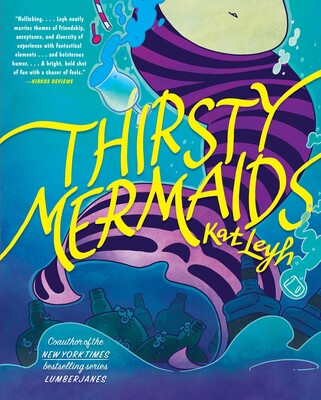
Mermaids. Margaritas. Mayhem. Three tipsy mermaids impulsively decide to become humans in search of more booze when their shipwreck wine cellar runs dry. While the spell they cast allows them to experience life on land, the mermaids realize that none of them know how to break it and find themselves trapped in a touristy seaside town with no money, no jobs, and nowhere to live. With the help of their new best friend (and bartender), the mermaids struggle to make sense of their new world – with some having more success than others. This colorful romp of a novel touches on some impressively deep issues, including body dysmorphia, anxiety, and depression. Thirsty Mermaids is an unexpected take on an old story with positive body images, LGTBQ+ characters, adventure, and mermaids who swear like sailors.
The Thud by Mikaël Ross; translated by Nika Knight; art by Mikaël Ross. Published by Fantagraphics.
Themes: Neurodiversity, Developmental disability, LGBTQIA+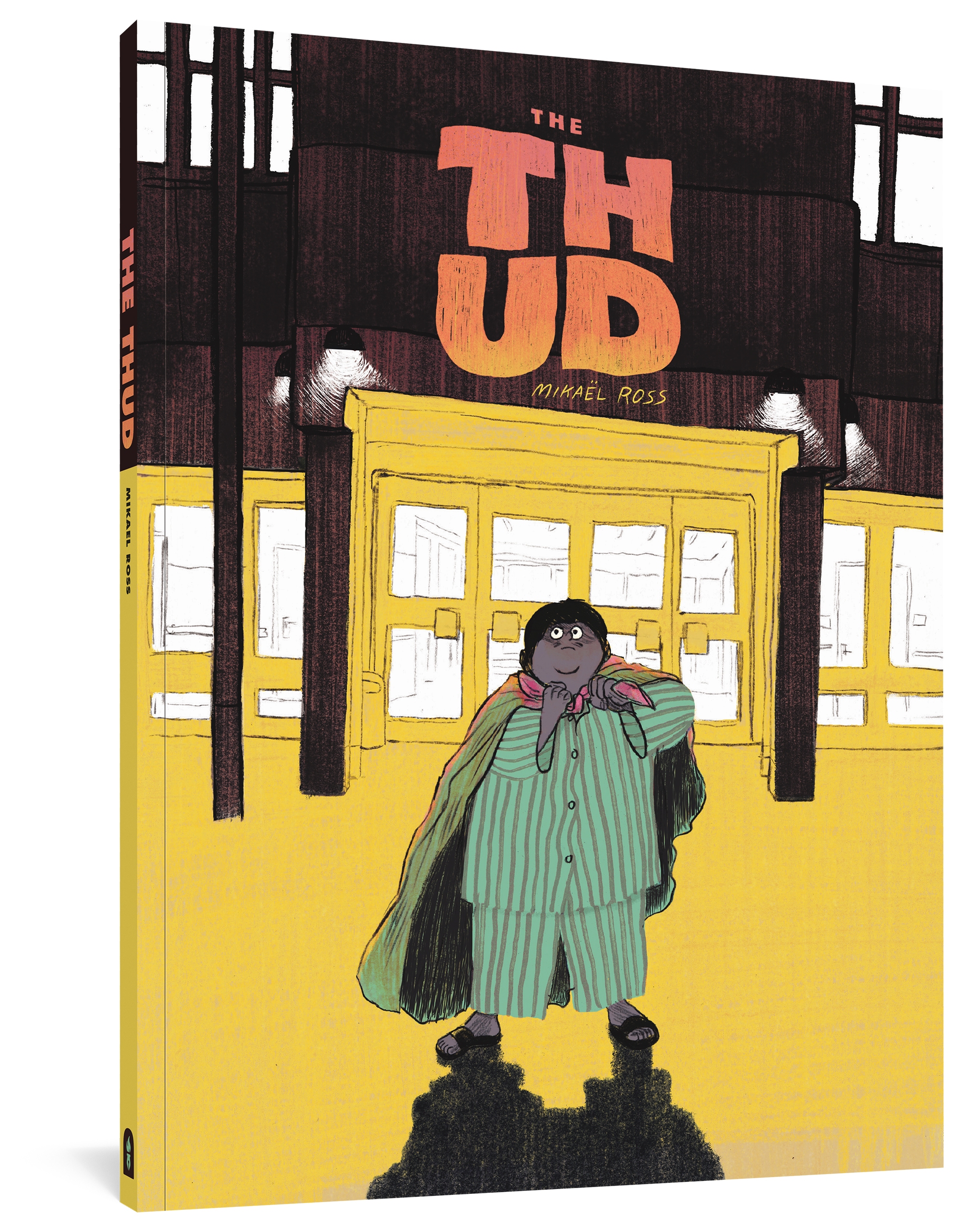
When Noel's mother has a stroke, his world changes dramatically. He can no longer stay in the home he has known his whole life and, for the first time, Noel is on his own. He moves to Neuerkerode, a village in Germany with a large population of people with developmental disabilities. They work in the village and some live in a group home that Noel moves into. The Thud is told from Noel's point of view with empathy, humor, and care for the lives depicted throughout the narrative. Noel learns to navigate a new life with help and insight from others. The journey is not always straightforward, but neither is it an insurmountable tragedy. The Thud is an engaging novel with expressive art in which neurodiverse readers may see aspects of themselves represented in the characters. The way characters are portrayed throughout the story may challenge preconceived notions of what developmental disability looks like through the lens of Noel's experiences.
Overfloweth: Adult
Catalogue Baby: A Memoir of (In)fertility by Myriam Steinberg; art by Christache. Published by Page Two Books.
Themes: Disability, Forced Minority, Feminism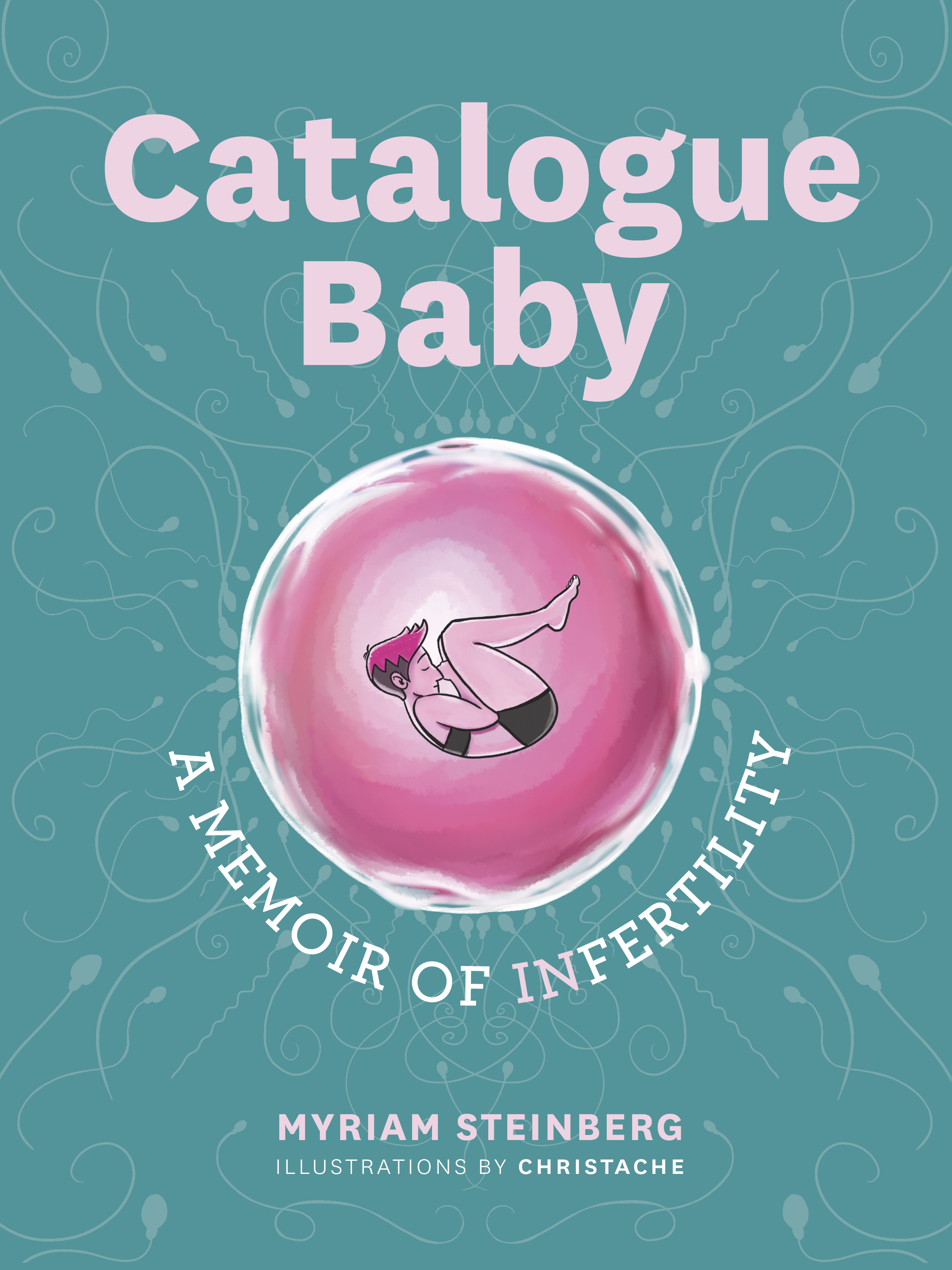
Catalogue Baby portrays one woman's difficult journey through fertility treatment and failed pregnancies. When Myriam Steinberg decides to pursue motherhood as a single parent, she endures IUI, IVF, and DIY attempts at becoming pregnant and suffers four miscarriages before she gives birth to her twins. Steinberg's memoir sheds light on the little-discussed pain of losing wanted pregnancies, the isolation that comes with that experience, and the stress– mental and physical– of repeated fertility treatments. With sometimes dark humor and raw honesty, Catalogue Baby is the story of one person's journey to have children and the often lonely, confusing, and painful process of seeking treatment, getting care, and coping with devastating outcomes. Christache's art captures both the humor and the heartbreak of Steinberg’s experiences.
The Day the Klan Came to Town by Bill Campbell; art by Bizhan Khodabandeh. Published by PM Press.
Themes: Color/Race/Ethnicity/Nationality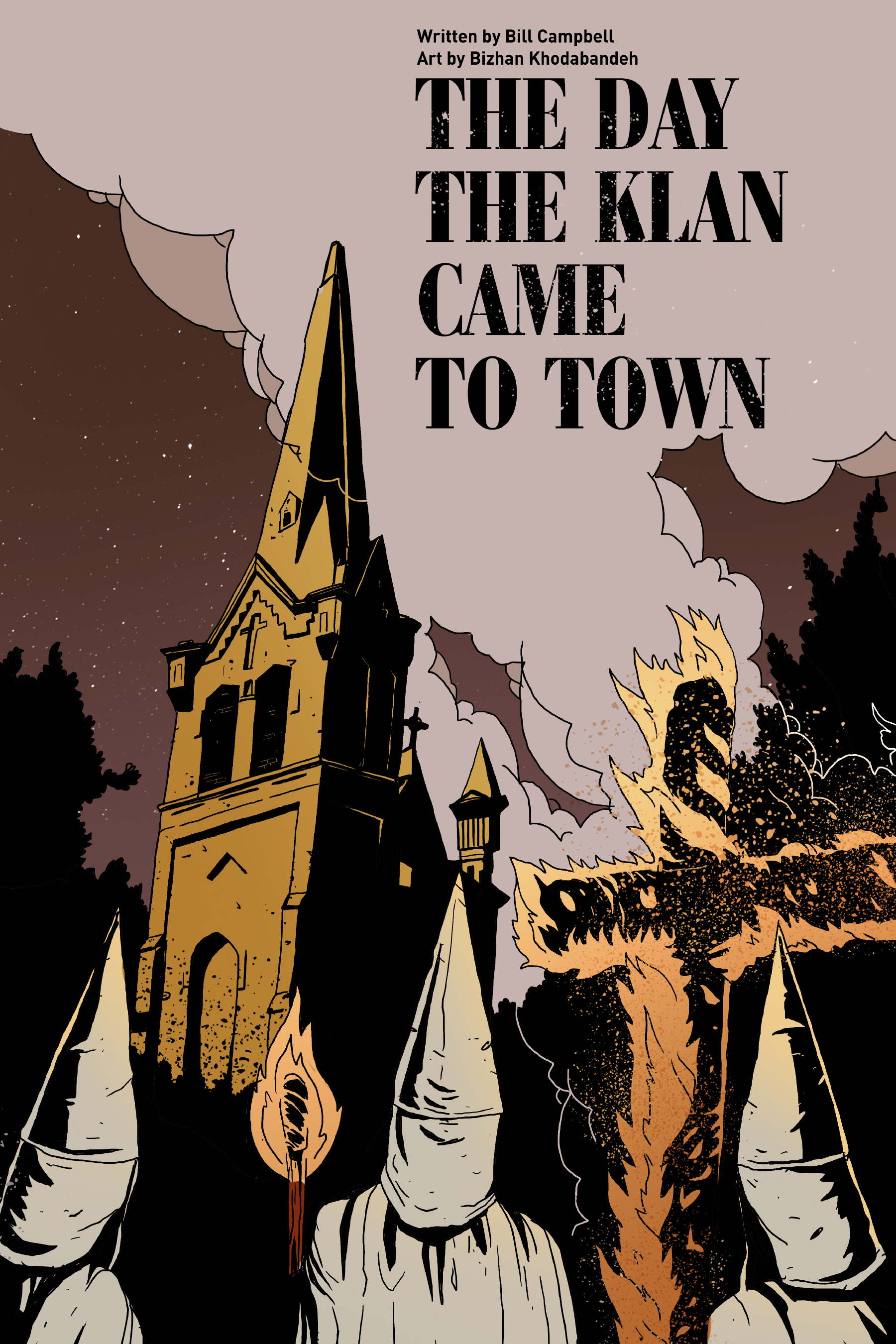
In 1923, the Ku Klux Klan, in a show of power, decide that they will parade through a Pennsylvania suburb as a warning to the diverse community living there. Primo Salerno, a Sicilian immigrant who fled facist Italy, knows he must take a stand alongside his neighbors against the Klan. The story covers Primo’s path from Italy to America, the Klan’s preparations for the parade, and the riot and its aftermath. It is a testament to community resilience, showing that anyone can make a difference by standing up to bigotry and hatred.
Eighty Days by A.C. Esguerra; art by A.C. Esguerra. Published by BOOM! Studios.
Themes: Color/Race/Ethnicity/Nationality, LGBTQIA+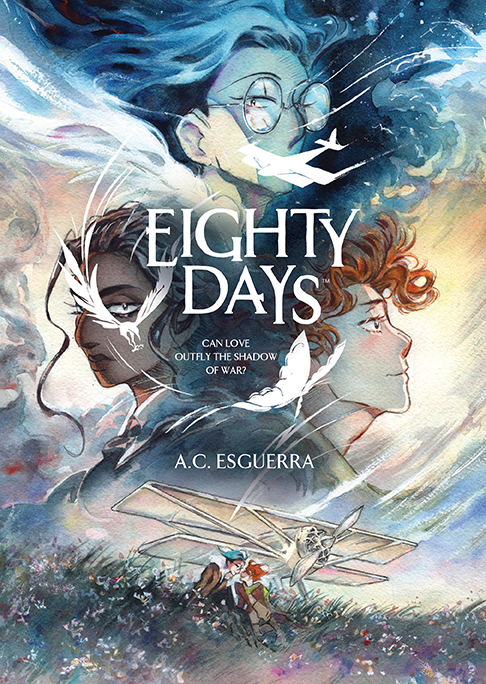
Eighty Days blends high-stakes aeronautic adventure with a gentle queer romance. In a world in which retro air technology rules the skies, laconic pilot Jay and charismatic radio whiz Fix are thrown together just as a nefarious organization begins to tighten its control over the free world. Seeking freedom, the pair joins up with an assortment of turncoats, rebels, and criminals, each with their own agenda. Trusting anyone in this world is a dangerous proposition, but love and friendship may be Jay and Fix's best hope for defeating their opponents. Esguerra's stunning artwork is perfectly suited for fast-paced action sequences, tender character moments, and the dynamism of flight. With inventive worldbuilding and a winning cast of characters, Eighty Days is a smart, fast-paced story of love and heroism.
A Man’s Skin by Hubert; translated by Ivanka Hahnenberger; art by Zanzim. Published by ABLAZE.
Themes: Sexuality, Gender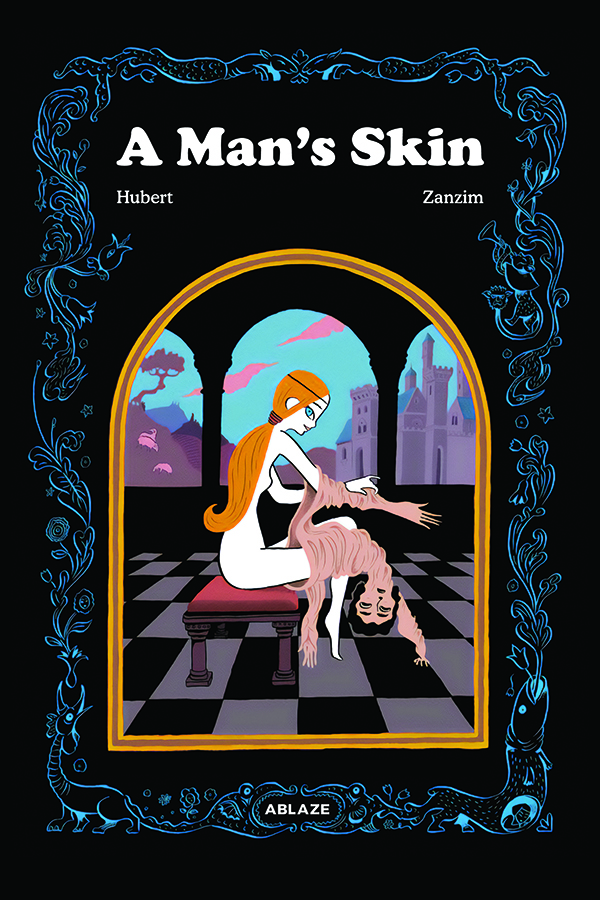
Set in a fictitious Renaissance Italy, this fantasy fairy tale follows the adventure of Bianca, who is soon to be married. When Bianca is given a magical skin that turns her into a man, she sets out to get to know her fiancee in his natural environment, the world of men. In doing so, she discovers the deep imbalances between men and women in her society, and explores the freedom and power of experience in this new world. Capturing themes about the quest for love and connection in an unfair and repressed world, this title is enjoyable and thought-provoking at the same time.
Pantomime by Christopher Sebela; art by David Stoll. Published by Mad Cave Studios.
Themes: Disability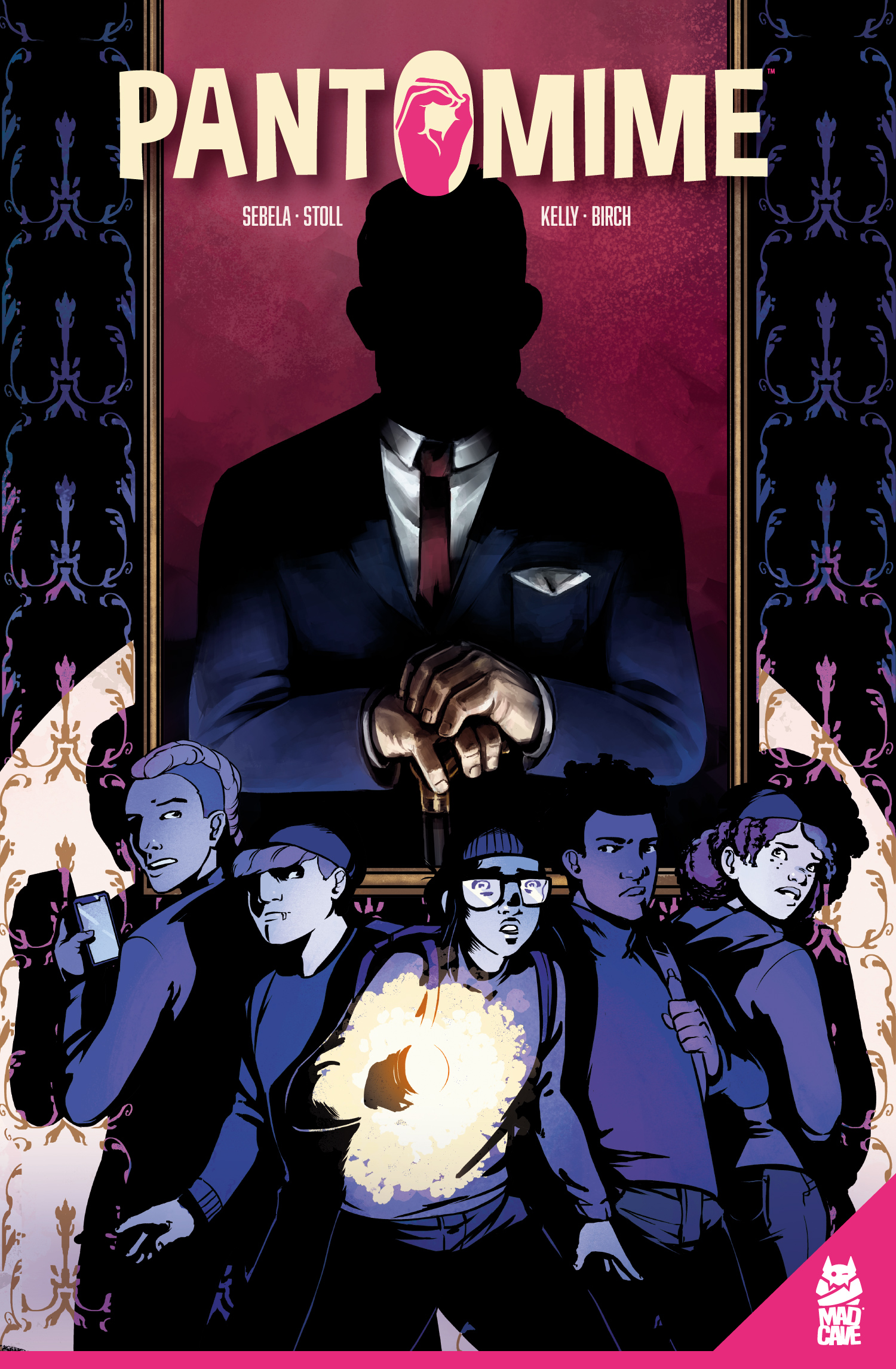
Following the death of their mother, Haley and her brother Max are sent to a boarding school for those with special needs, where they find community among other deaf students. When a member of their group is at risk of being kicked out, the group organizes and executes a heist that lands them in hot water with the wrong people. They must then use their various skills to pay back what they stole and later to escape their captors. This heist title highlights the characters' use of sign language with unique speech bubbles and depicts how others communicate with them as well.
This is How I Disappear by Mirion Malle; translated by Aleshia Jensen and Bronwyn Haslam; art by Mirion Malle. Published by Drawn & Quarterly.
Themes: Disability, LGBTQIA+
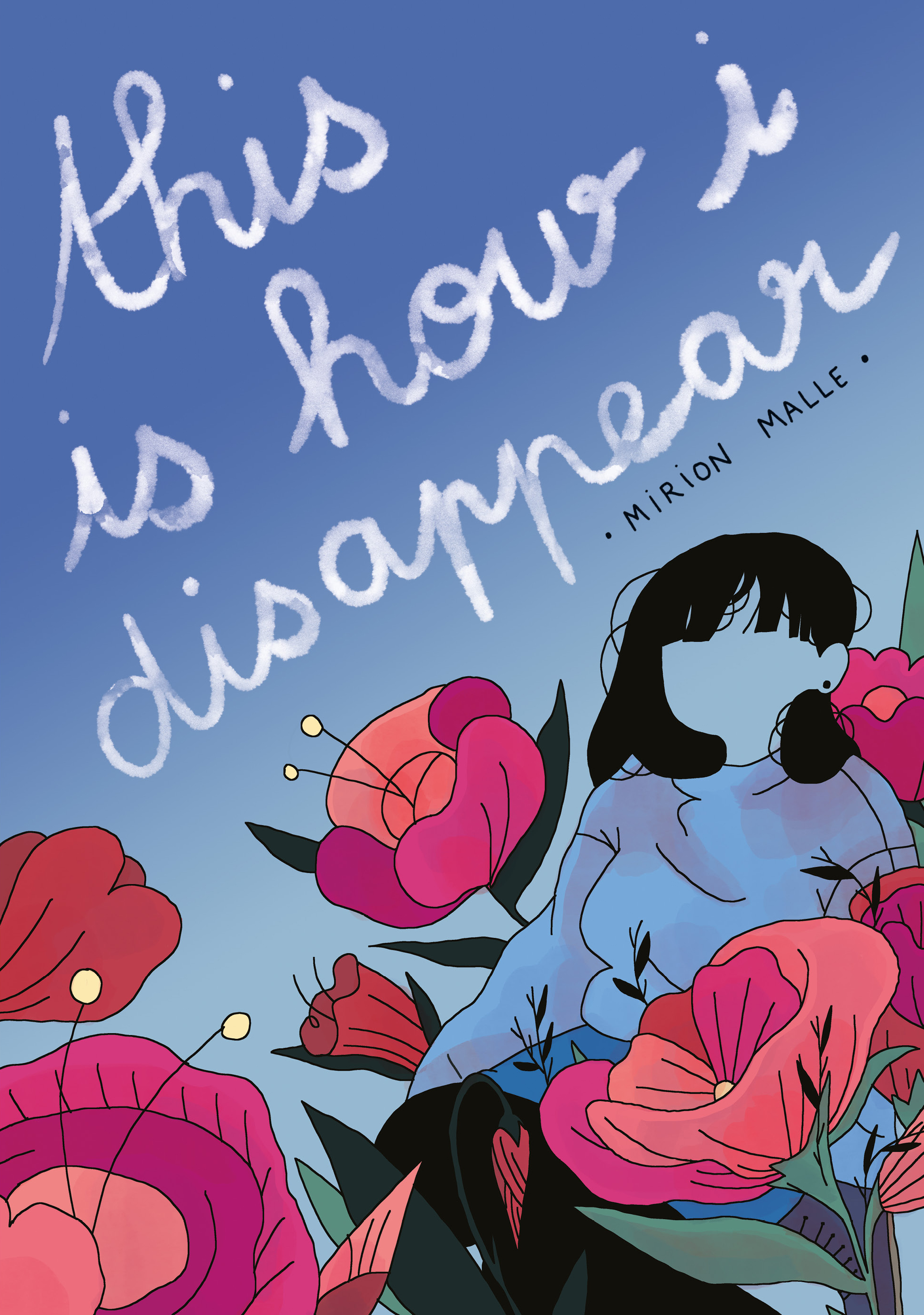
Clara's problems are piling up: she has writer's block, her friends ask too much while giving nothing back, her therapist isn't helping, and her publishing job leaves little time for effective self-care. One of the most moving things about Malle's novel is the way it portrays depression: while Clara tries to seek solace, support, and comfort in her community, she often feels empty and unable to express the draining depression she is trying to cope with. Malle's portrayal of depression and psychological stress in the wake of a sexual assault offers an empathetic window into a mental health issue that can be difficult to understand from the outside. This Is How I Disappear is a very modern story with social media communication, texting, and a raw, insightful exploration of depression and how we cope, connect, and heal together.
The Waiting by Keum Suk Gendry-Kim; translated by Janet Hong; art by Keum Suk Gendry-Kim. Published by Drawn & Quarterly.
Themes: Color/Race/Ethnicity/Nationality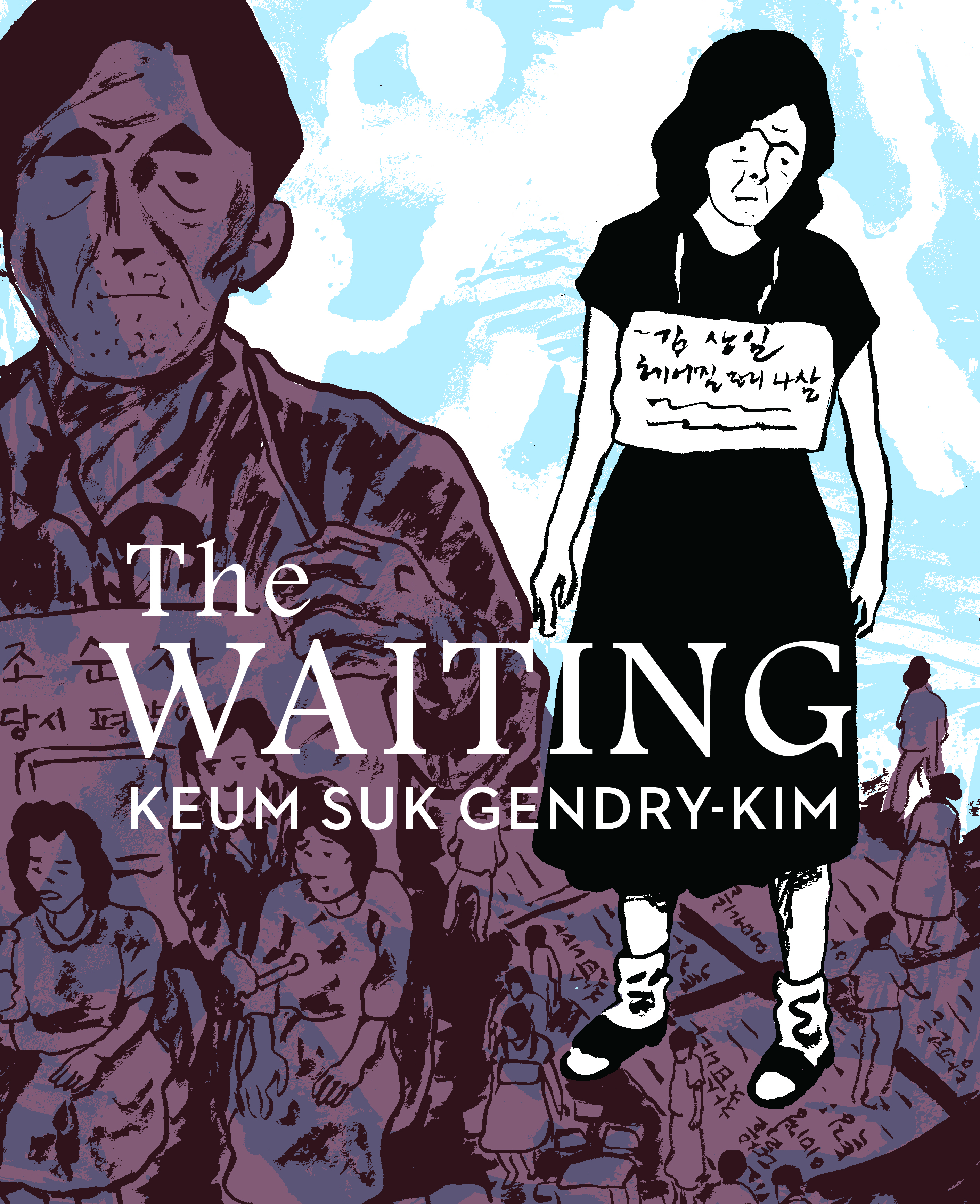
The Waiting is the story of a mother and her daughter: Gwija, a North Korean refugee separated from her family during the Korean War, and Jina, now middle-aged, who is trying to understand the impact of her mother's loss on the trajectory of their lives. Inspired by the author's own family history, this graphic novel combines empathetic historical fiction with spare, striking illustrations to tell a story of ordinary people swept up in conflict—a conflict that lives on through the continued separation of Korean families. The Waiting is a compelling portrait of the cruelty of war and its impact across generations.
Winner: Youth
The Unfinished Corner by Dani Colman; art by Rachel "Tuna" Petrovicz. Published by Vault Comics.
Themes: Religion, Color/Race/Ethnicity/Nationality, Feminism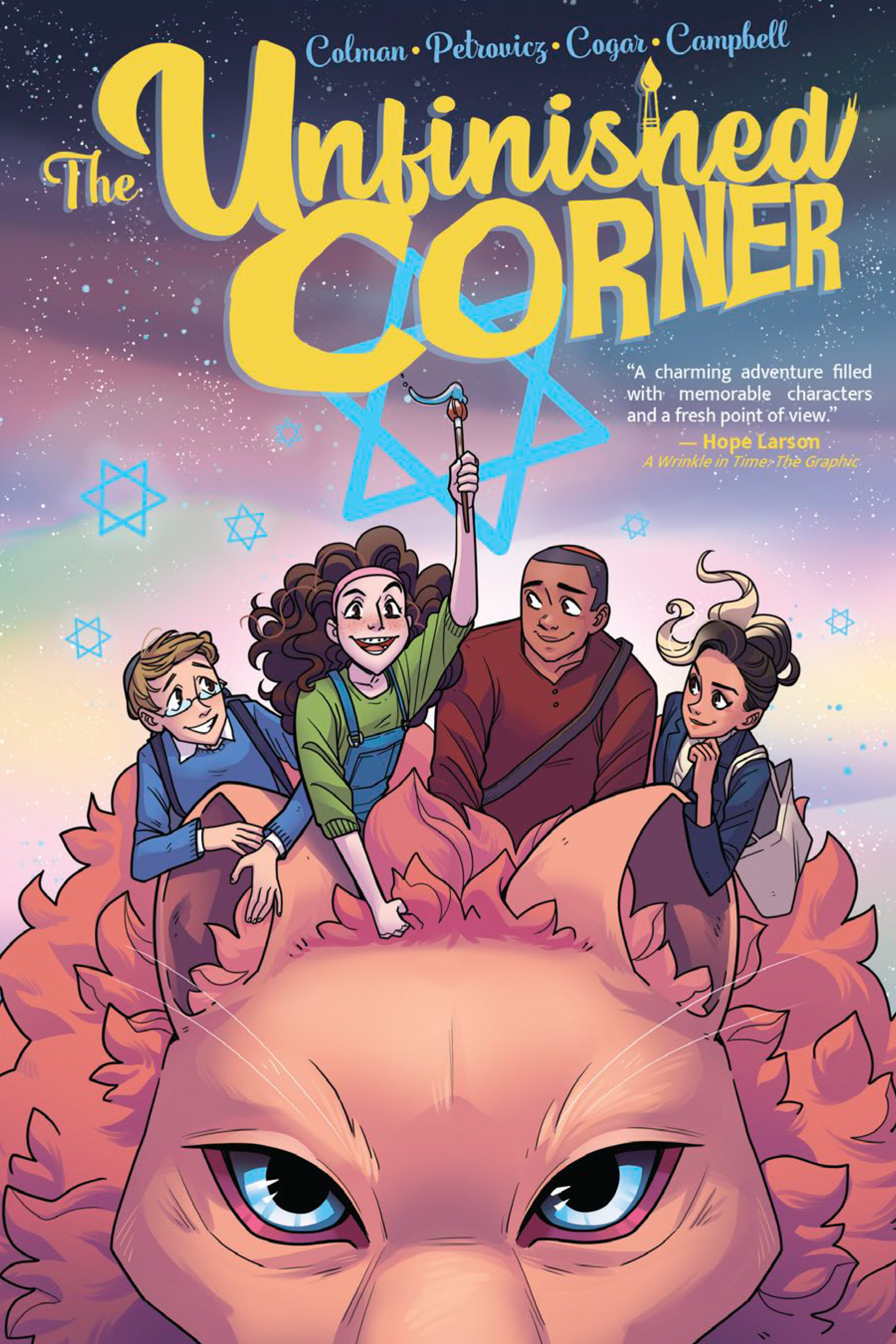
This graphic novel follows classmates Miri, Avi, David, and Judith as they are tasked to finish the Unfinished Corner. The story relies on aspects of Jewish faith, mythology, and history to weave a modern epic quest. It meshes the diverse ideas of what it means to be Jewish today with the expansive cultural heritage of the Jewish people, creating an exciting fantasy story for all readers. The diverse family backgrounds among the group give the characters different experiences and interests to draw from that help progress the journey and show readers faceted depictions of Jewish identity, faith, and philosophy. The vibrant and immersive artwork delivers the narrative and helps to convey the similarities and differences between the main characters. Overall, The Unfinished Corner delivers an engaging and moving story that anyone will enjoy, while representing Jewish culture in a way both welcoming to those outside the community and positively impactful to those within.

Dani Colman (Author)

Rachel "Tuna" Petrovicz
Honor Books: Youth
Carlos Gomez Freestyles… Heavy on the Style by Chuck Gonzalez; art by Chuck Gonzalez. Published by Reycraft Books.
Themes: LGBTQIA+, Color/Race/Ethnicity/Nationality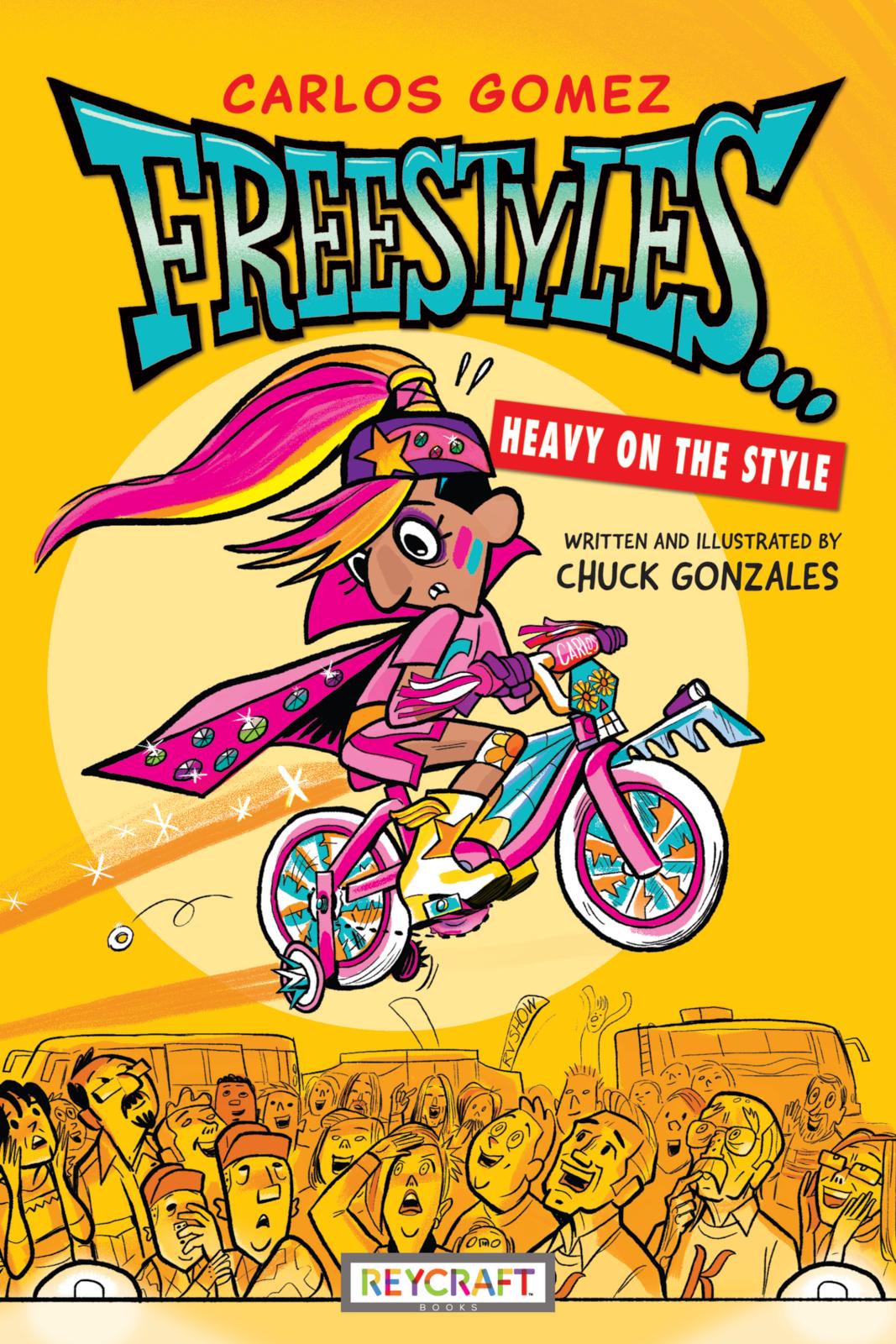
Carlos Gomez is a gender-nonconforming Latinx kid with a lisp in seemingly all-white, straight-laced Sioux Falls, South Dakota. While he’s bullied at school and his family experiences micro-aggressions in the community, Carlos retains a hopeful spirit and strong desire to find his own style. When a community talent show leads Carlos to team up with new kid RJ to showcase BMX skills, Carlos just might find the opportunity to reveal his colorful and spectacular true self. The story is semi-autobiographical, with creator Chuck Gonzales describing it as “the Hollywoodized version of my childhood I wished for.” The artwork is colorful and expressive with fun chapter title pages that exhibit the main character’s own art on unique media, like envelopes and notebook paper. This is a story about a supportive family, a community that can change, and a boy who proclaims his pride.
The Girl from the Sea by Molly Knox Ostertag; art by Molly Knox Ostertag. Published by Scholastic Inc.
Themes: LGBTQIA+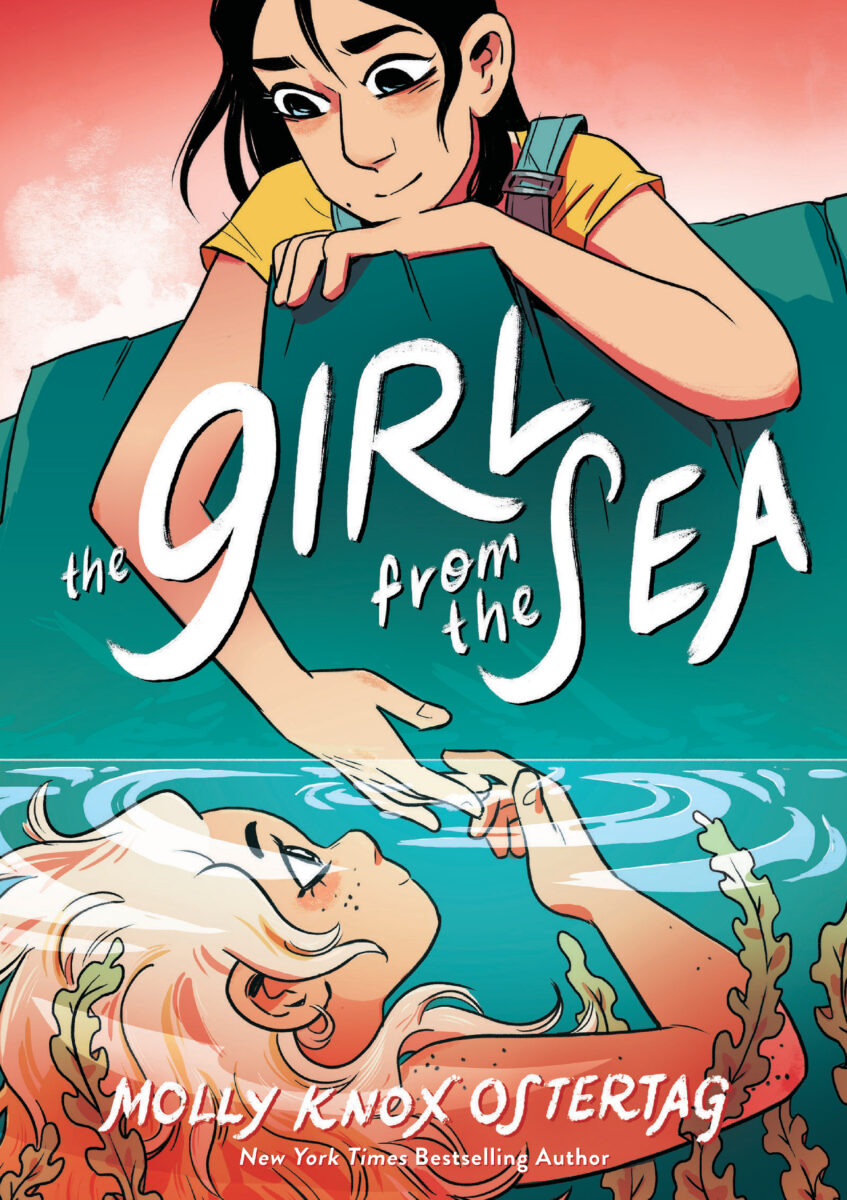
Morgan lives in a small community, isolated on an even smaller island, and she can’t wait to leave. She feels out of place, and keeps secrets from everyone, including the fact that she likes girls. One night, a mysterious girl named Keltie saves Morgan from drowning, and the two quickly enter a friendship turned whirlwind romance. Suddenly, Morgan’s life isn’t so stifling, but her desire to keep her secrets and Keltie’s tendency to be open with others—despite keeping the fact that she’s a selkie a secret from most people—causes tension in their relationship. This brightly illustrated story is about first love, coming out, and accepting yourself. Morgan and Keltie’s relationship is cute and realistic, with good chemistry and a healthy dose of conflict that gives the relationship depth without being too forced.
Himawari House by Harmony Becker; art by Harmony Becker. Published by Macmillan Children's Publishing Group.
Themes: Color/Race/Ethnicity/Nationality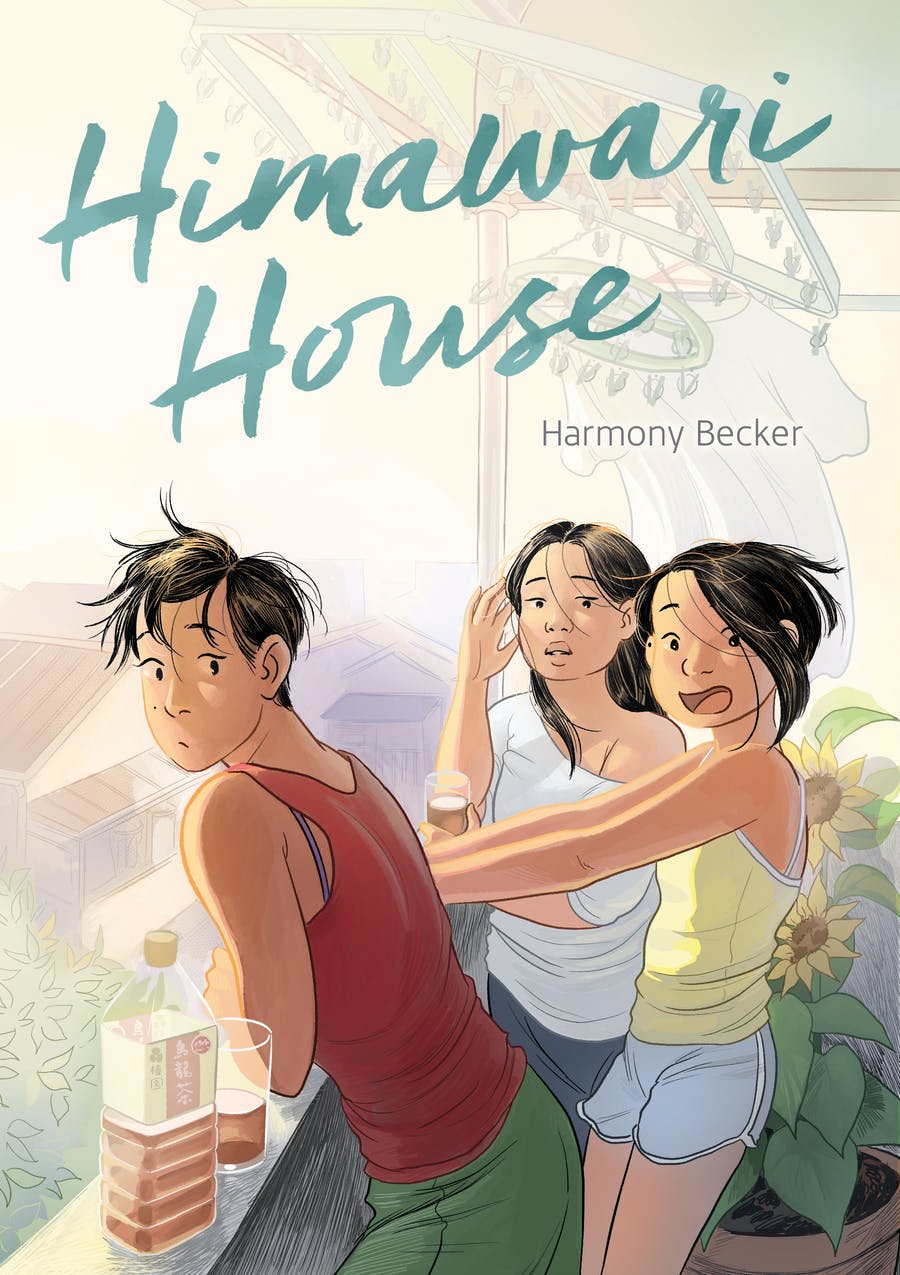
This heartfelt slice-of-life story centers around Nao, who is visiting Japan after growing up in America, and her roommates in the shared Himawari House. Nao's roommates are from Japan, Singapore, and Korea, and the book touches on some of the differences in their perceptions of what it means to be Asian, while also focusing on communication and their personal ideas of belonging to a place or people. The characters are resonant and full of life, engaging the reader in their individual and shared stories.
Living with Viola by Rosena Fung; art by Rosena Fung. Published by Annick Press.
Themes: Color/Race/Ethnicity/Nationality, Ability Diverse (Mental Health)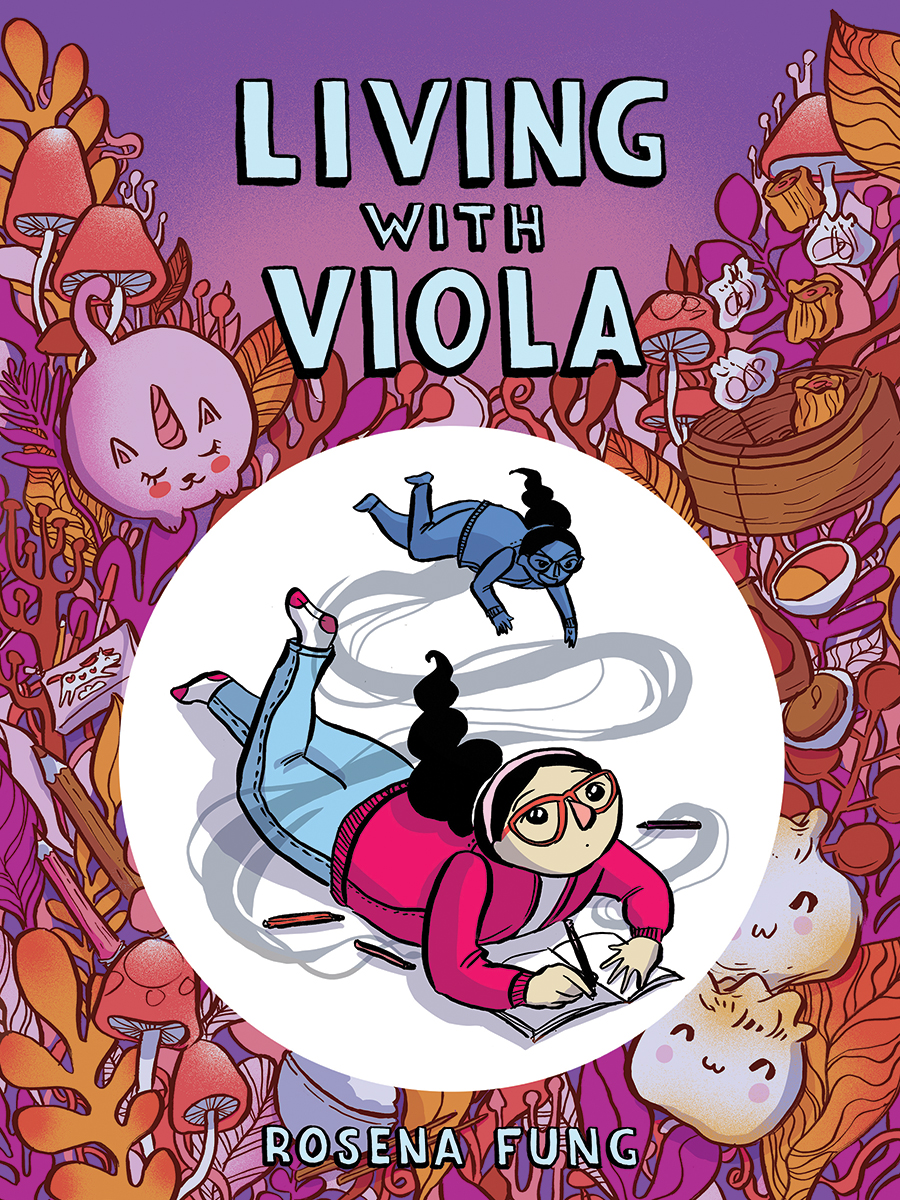
Living with Viola is an intimate look at depression and anxiety through the story of Olivia “Livy” Siu Leen Tong. The daughter of Chinese immigrants, Livy has just started 6th grade at a new school. Like many middle schoolers, she struggles with meeting the expectations of her family, making friends, and figuring out where she belongs, but Livy also struggles with Viola, a personification of her mental health. In contrast with the warm reds and yellows used to color the illustrations, Viola, in dark purples and grays, floods Livy with negative emotions that threaten to overwhelm her. When Livy receives a diagnosis of anxiety and panic disorder, she learns techniques that help to keep Viola at bay, although it is also clear that there is not a magic solution that will make everything better. Through a better understanding of mental health, Livy finds balance in friend relationships and pride in her family’s immigrant heritage.
Piece by Piece: The Story of Nisrin's Hijab by Priya Huq; art by Priya Huq. Published by Abrams Books.
Themes: Color/Race/Ethnicity/Nationality, Religion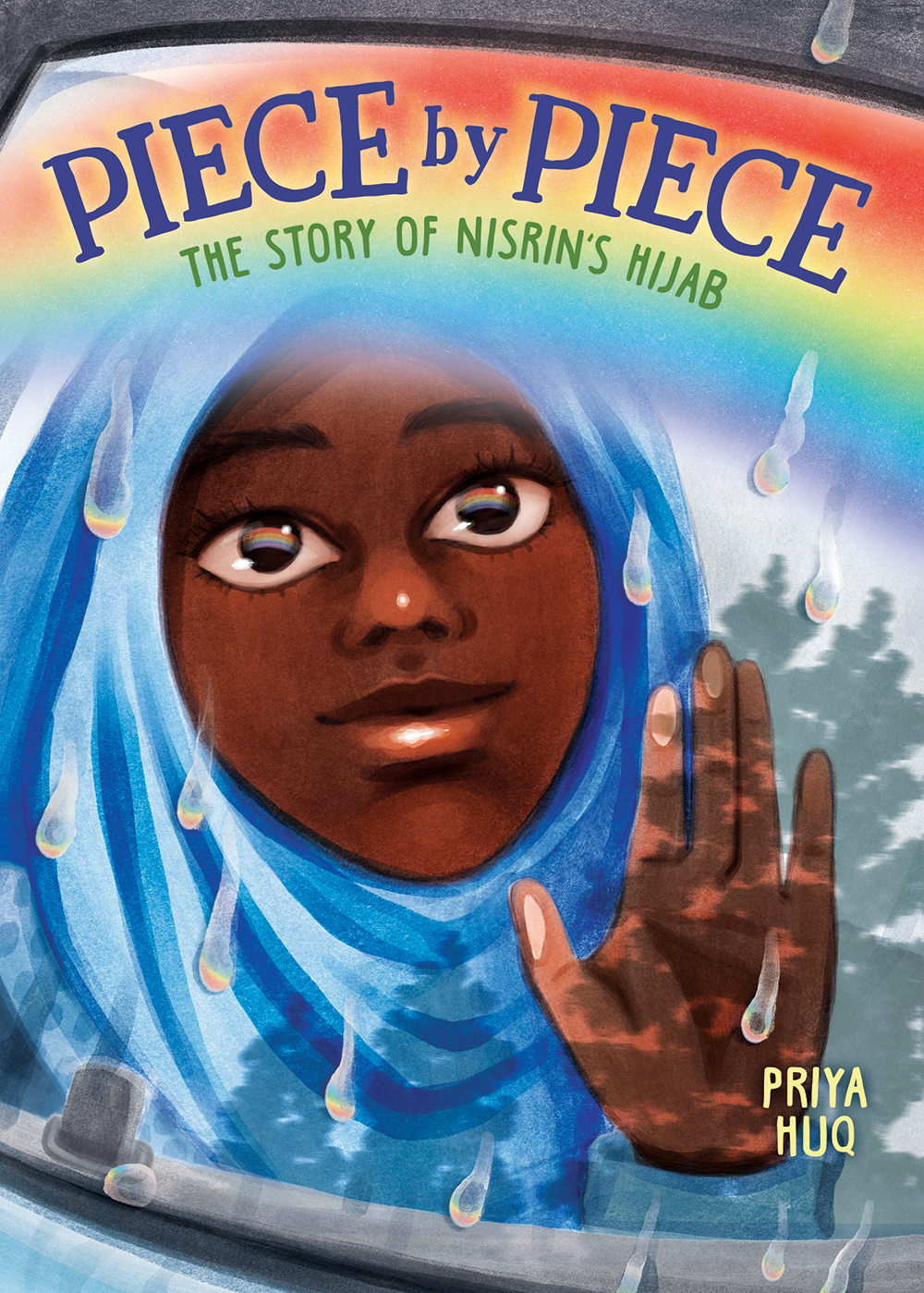
After falling victim to a hate crime while in Bangladeshi cultural dress for a school project, Nisrin is traumatized from the experience. Besides attending weekly therapy sessions, Nisrin rarely goes out, spending summer break isolated at home until it’s time for her to start school. With the start of school comes a declaration: despite her family’s protests, Nisrin decides to wear the hijab. This decision kicks off a journey of self-discovery for Nisrin, focusing on her relationship with Islam and how her family—who are immigrants who fled war and genocide in Bangladesh—react to her faith.
Piece by Piece is set in 2002, at a time when anti-Muslim sentiment was high in America, and reflects the tensions still seen in our country today. Nisrin’s story is one of finding herself through a connection to her religion and culture, and how her choice to wear a hijab gives her strength and sets her on a path towards true happiness and reconciliation with her friends.
Overfloweth: Youth
Artie and the Wolf Moon by Olivia Stephens; art by Olivia Stephens. Published by Lerner Publishing Group.
Themes: Color/Race/Ethnicity/Nationality, LGBTQIA+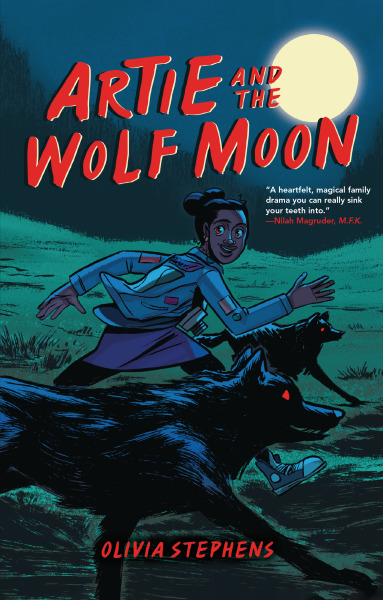
13-year-old Black photographer Artie's life changes when the wolf she encounters while taking photos at night turns into her mother and she discovers that they are both werewolves. Artie and her mother travel to the Willow Ridge werewolf community to reconnect with other werewolves, all of whom are descended from a runaway slave who made a pact with the wolves in order to protect her children. Artie balances growing pains and high school trouble with discovering the connection between the new vampire menace and the disappearance of her late father.
Borders by Thomas King; art by Natasha Donovan. Published by Hachette Book Group.
Themes: Color/Race/Ethnicity/Nationality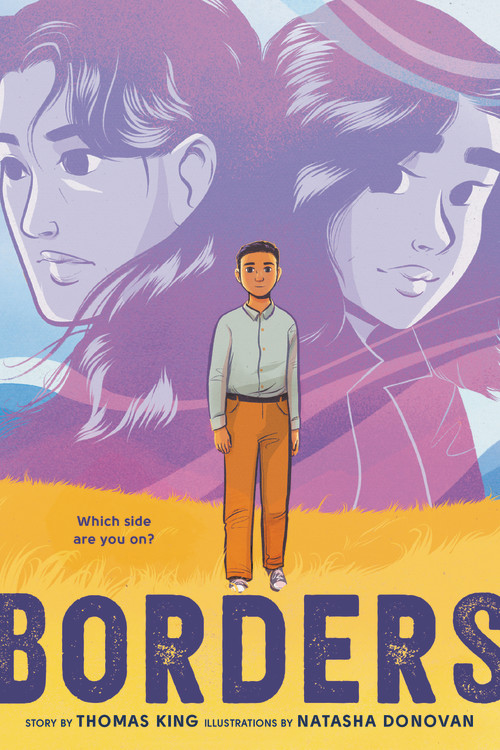
Adapted from a short story and told from the perspective of a young boy on an adventure, Borders focuses on a Blackfoot family’s difficulties at the Unites States and Canadian border check. It is a unique perspective on the many ongoing conversations about the sovereignty of Indigenous Nations and the physical or political borders that define a place, people, or identity.
Cheer Up: Love and Pompoms by Crystal Frasier; art by Val Wise. Published by Oni Press.
Themes: LGBTQIA+, Color/Race/Ethnicity/Nationality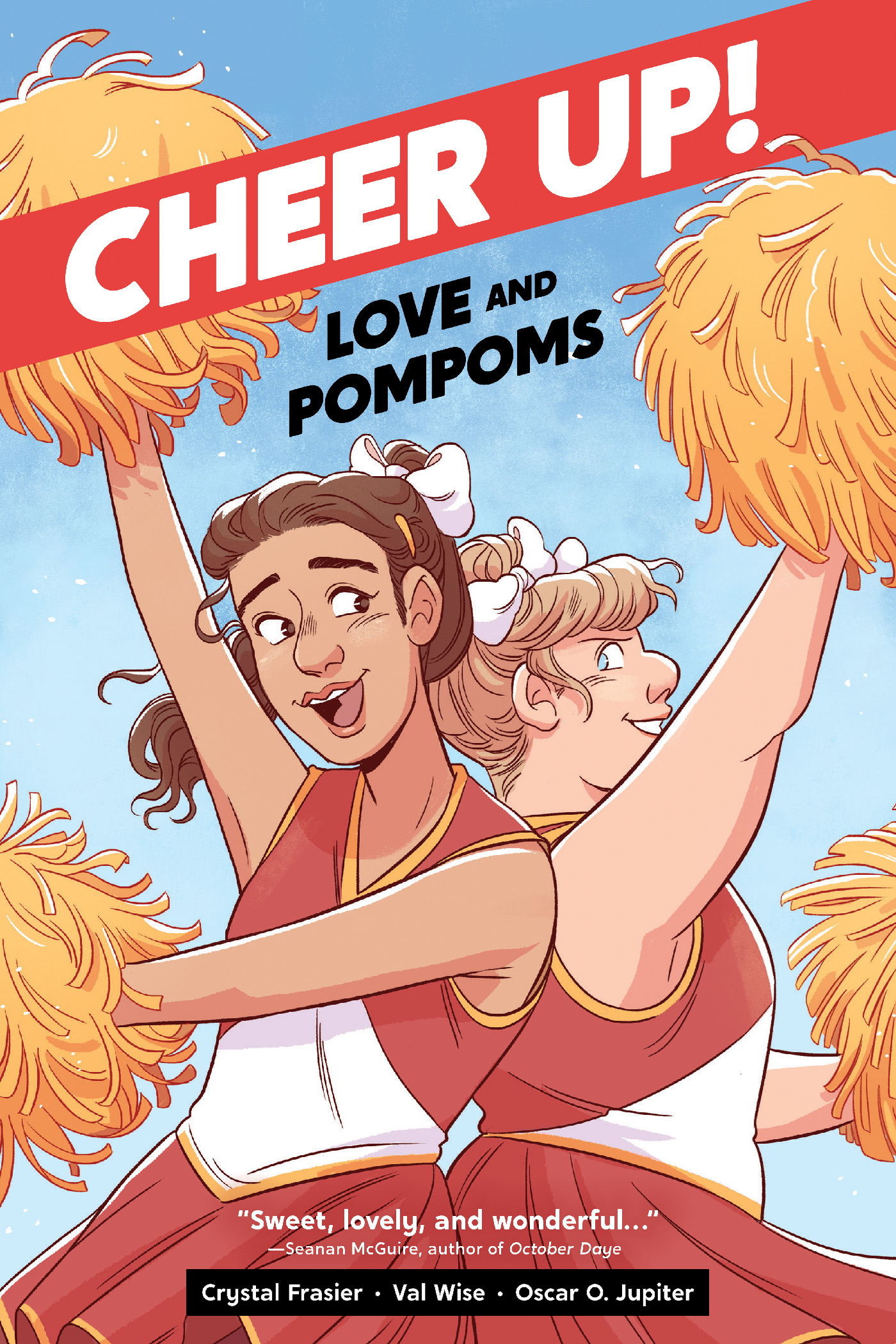
Annie, a bold and outspoken lesbian, joins the cheer squad to diversify her college applications, and shy, biracial, Latinx trans girl Bebe is trying to keep her grades up so her parents support her transition. The cheerleading squad possess varying skin tones and body shapes, and one member comes out as gender nonbinary. Although this graphic novel is mainly about becoming part of a team, it centers on the budding relationship between Annie and Bebe. This story not only illustrates the issues that Bebe is facing with being the first transgender student at her school, but also gives examples of how allies can overstep as well. Cheer Up: Love and Pompoms is a sweet, cute and fun read that many readers would enjoy, cisgender or otherwise.
Four Faces of the Moon by Amanda Strong; art by Amanda Strong. Published by Annick Press.
Themes: Color/Race/Ethnicity/Nationality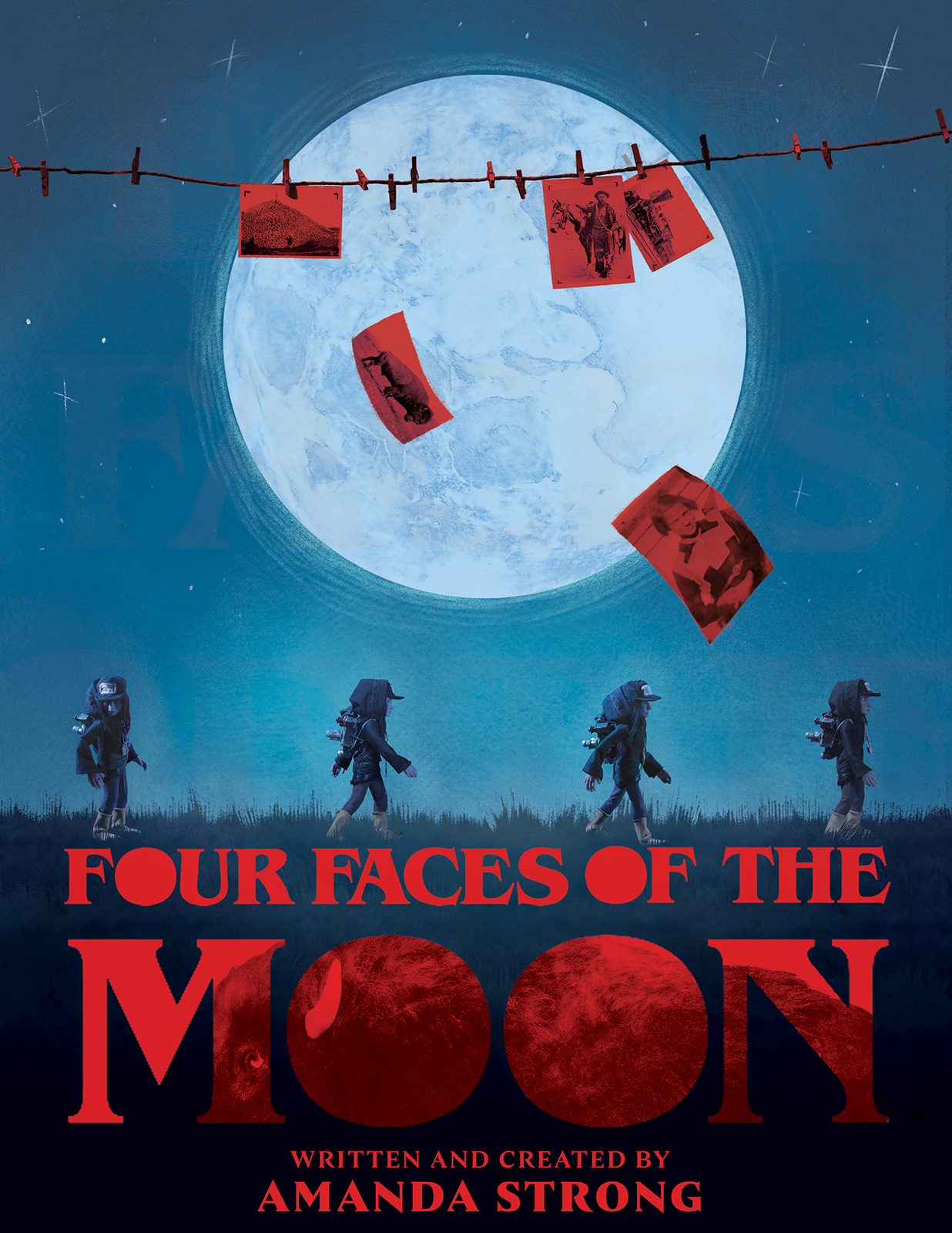
Adapted from a stop motion film, Four Faces of the Moon is a visually unique graphic novel about the author’s family history and connection to her culture. Spotted Fawn and her family are Métis—a group that is of mixed Indigenous and European descent that formed their own community and culture—and have been involved in several key events in Métis history. The story is told through flashbacks, with Spotted Fawn narrating the events her ancestors lived through and how they impacted the Métis community. While many of these events are tragic, Four Faces of the Moon’s message is ultimately one of hope and resilience, and of taking pride in your culture and family history.
Jukebox by Nidhi Chanani; art by Nidhi Chanani. Published by Macmillan Children's Publishing Group.
Themes: Color/Race/Ethnicity/Nationality, Disability, LGBTQIA+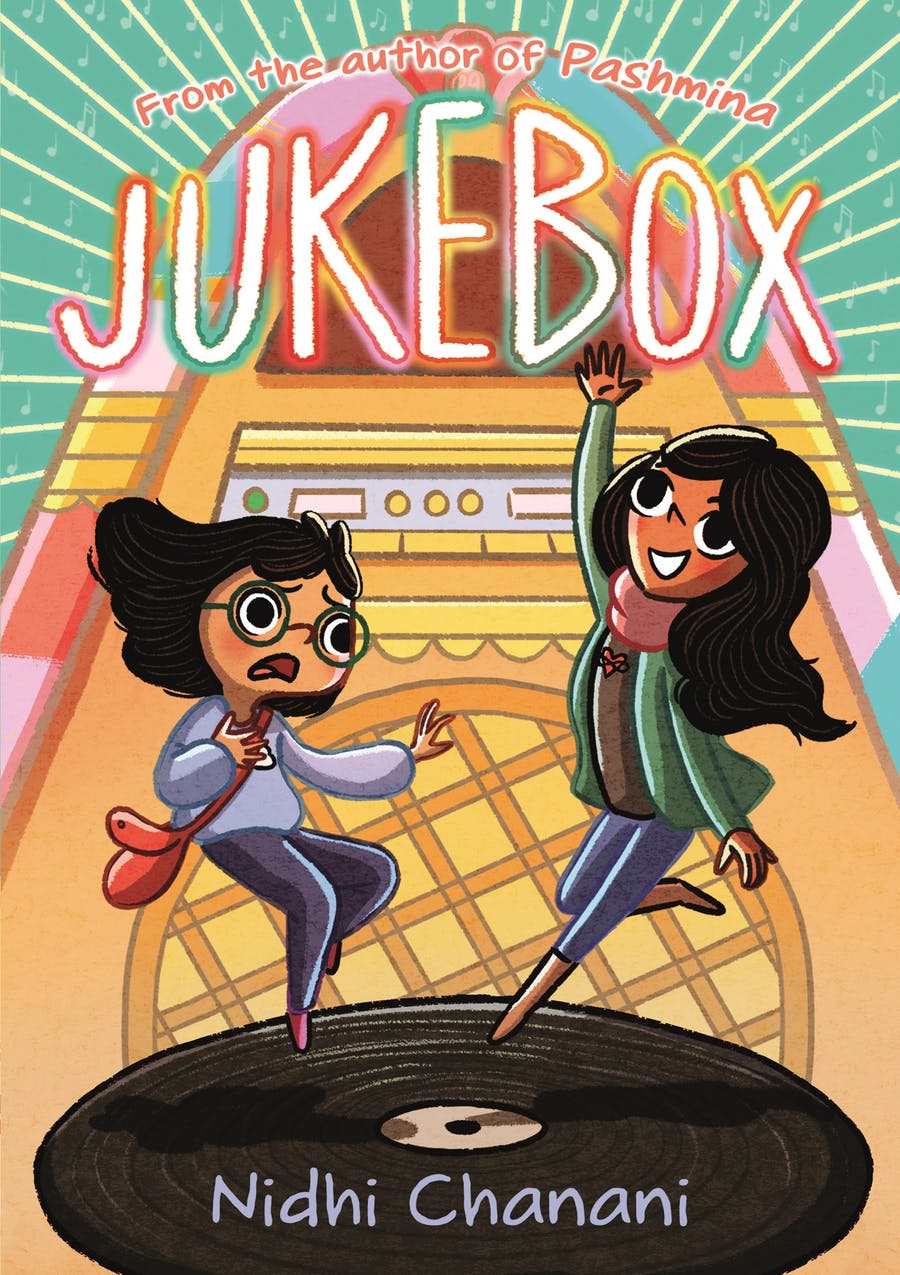
Jukebox features a diverse cast of characters: Shahi, a mutliracial Bangladeshi-Muslim girl; her cousin Naz, a Bangladeshi girl with a hearing disability who comes out as bisexual; and Earl, who has dyslexia. In order to find her father, Shahi enlists the help of her cousin Naz, and together they must time travel through a magical jukebox they found in an attic. The artwork does an excellent job of conveying music through a visual medium with music notes, glowing ribbons, and dancing song lyrics connecting music to the storyline. Many of the songs featured in Jukebox bring them to times of unrest and change and give a glimpse of the culture they exist in and the expectations placed on them. Jukebox is an interesting and innovative approach to time travel by combining music, history, and family, as well as exploring how music and society are connected.
Just Roll With It by Lee Durfey-Lavoie; art by Veronica Agarwal. Published by Random House Children's Books.
Themes: Mental Health, Color/Race/Ethnicity/Nationality, LGBTQIA+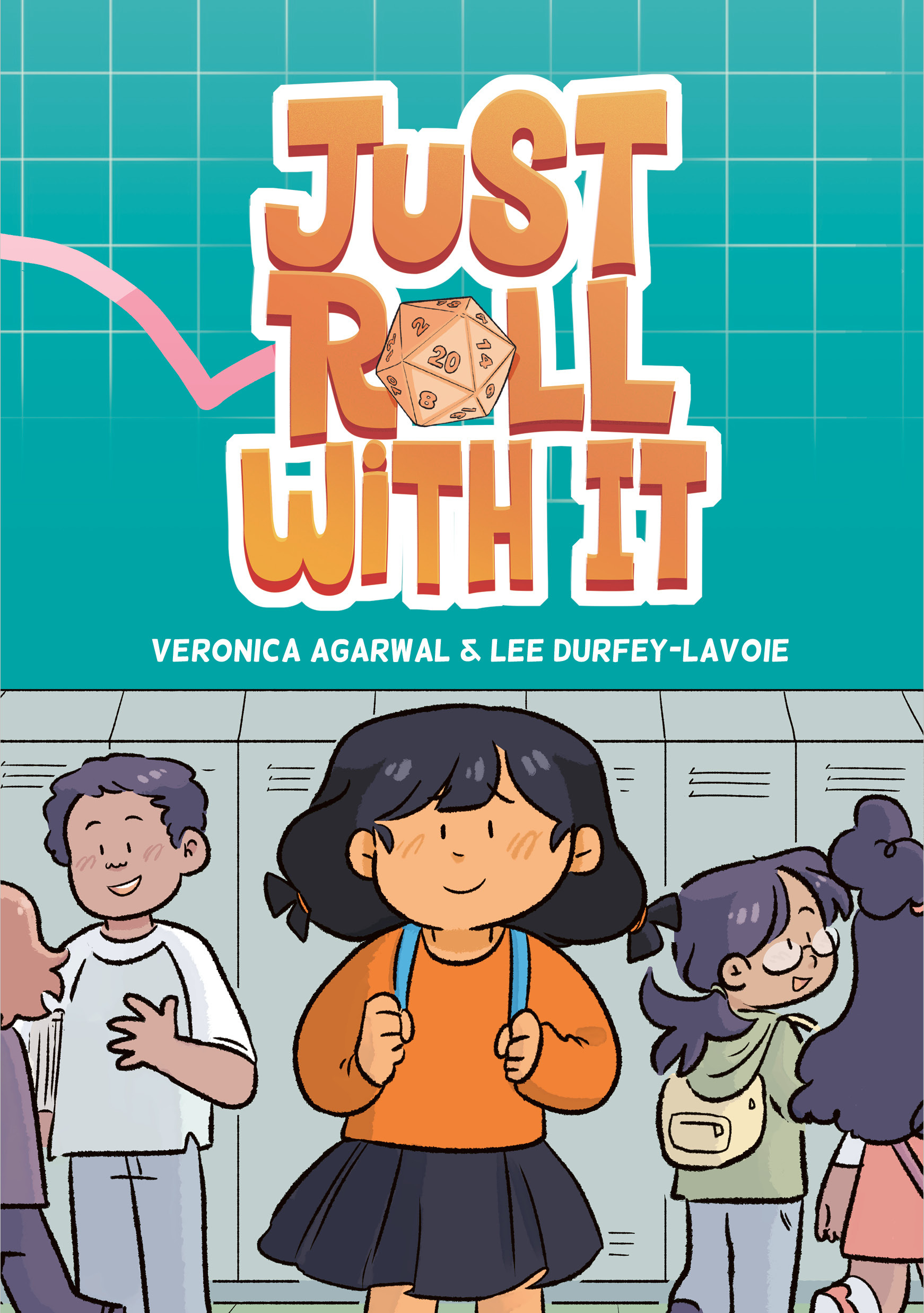
In Just Roll With It, Maggie relies heavily on her twenty-sided die to navigate her daily life and exhibits other signs of anxiety and possibly OCD. The reader follows Maggie as she faces monsters both real and imaginary while gathering the courage to ask for and receive help. The story illustrates these invisible mental health issues in ways that are identifiable and relatable and presents a brief but unique depiction of youth therapy.
Manu by Kelly Fernández; art by Kelly Fernández. Published by Scholastic Inc.
Themes: LGBTQIA+, Color/Race/Ethnicity/Nationality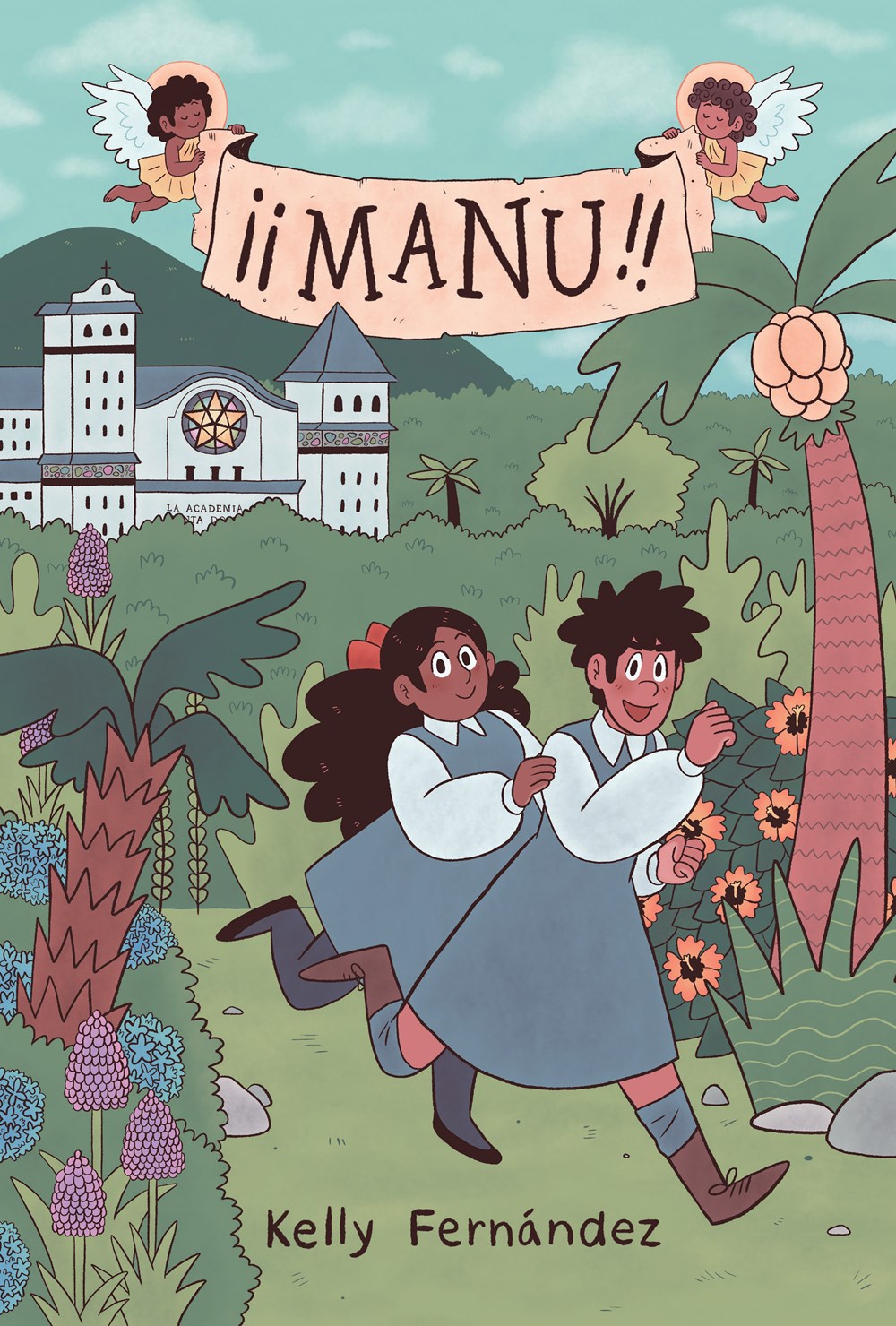
Best friends Manu and Josefina live at a magical school for girls in the Dominican Republic. While Josefina takes things seriously, Manu is constantly getting into trouble for using magic to prank the teachers and students. When a prank finally goes too far, Josefina wishes Manu’s magic would disappear and accidentally curses Manu in the process. Desperate to get her magic back, Manu tries a dangerous spell that will have repercussions for everyone involved. A story of friendship and belonging at heart, Manu shows how hard it can be to fit in when you’re seen as the only one who’s different. Mixed in is a fantastically diverse cast and a magic system that celebrates the Dominican Republic’s unique mix of folk magic and religion, offering an interesting look at Dominican culture.
Road Allowance Era (A Girl Called Echo, Vol. 4) by Katherena Vermette; art by Scott B. Henderson. Published by Portage & Main Press.
Themes: Color/Race/Ethnicity/Nationality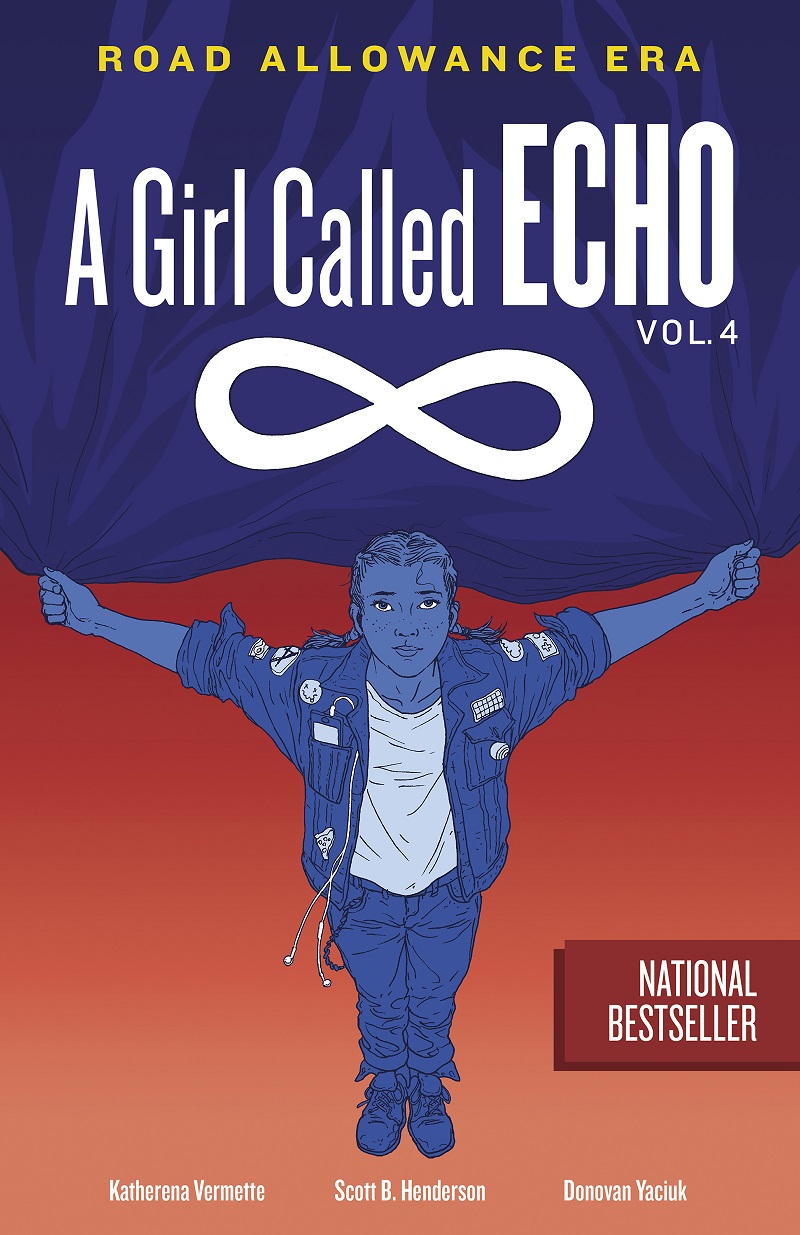
Echo, a young Métis teen, learns about her cultural history in a unique way– time travel. She discovers an ability, which one ancestor explains as “blood memory,” to visit her ancestors during illustrative moments in history. The Métis have a unique cultural heritage created by their mixed Indigenous and European ancestry, which may be unfamiliar to readers from the United States. This short volume focuses on the “road allowance” era, when displaced Métis squatted on unused Crown land, until they were forcibly removed. In under 50 pages, there isn’t much time to develop a fully realized concept, but the realistic art carries the storytelling to create a compelling and emotional tale. Supplemented by fragments of lessons heard in Echo’s history class and a footnoted timeline in the back matter, this graphic novel celebrates the resilience of oppressed peoples.
|



 Theme:
Theme: 


























